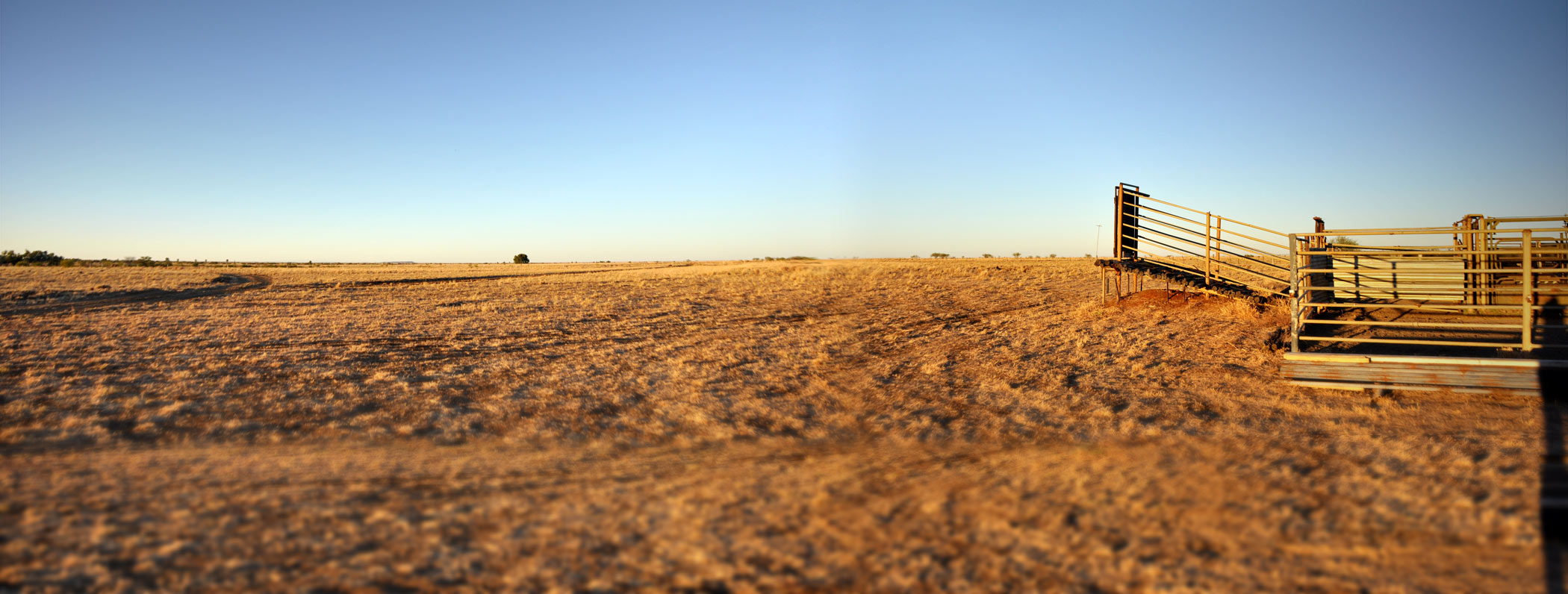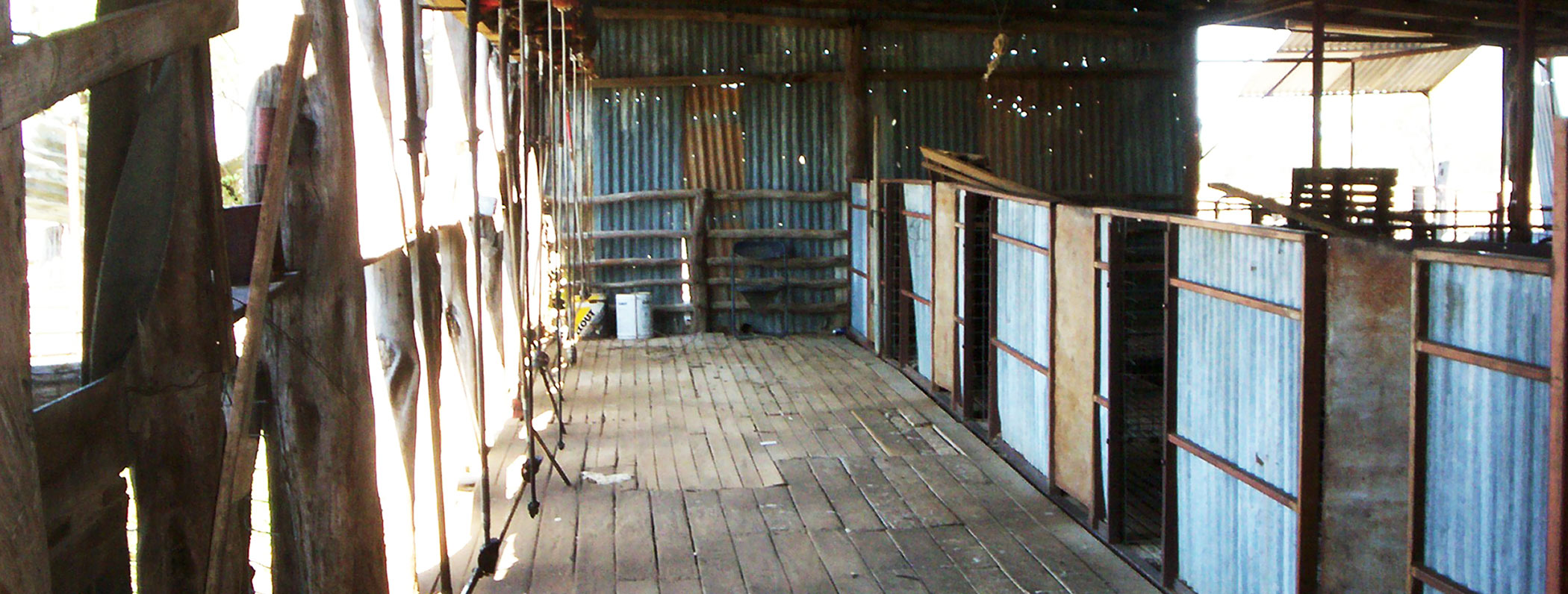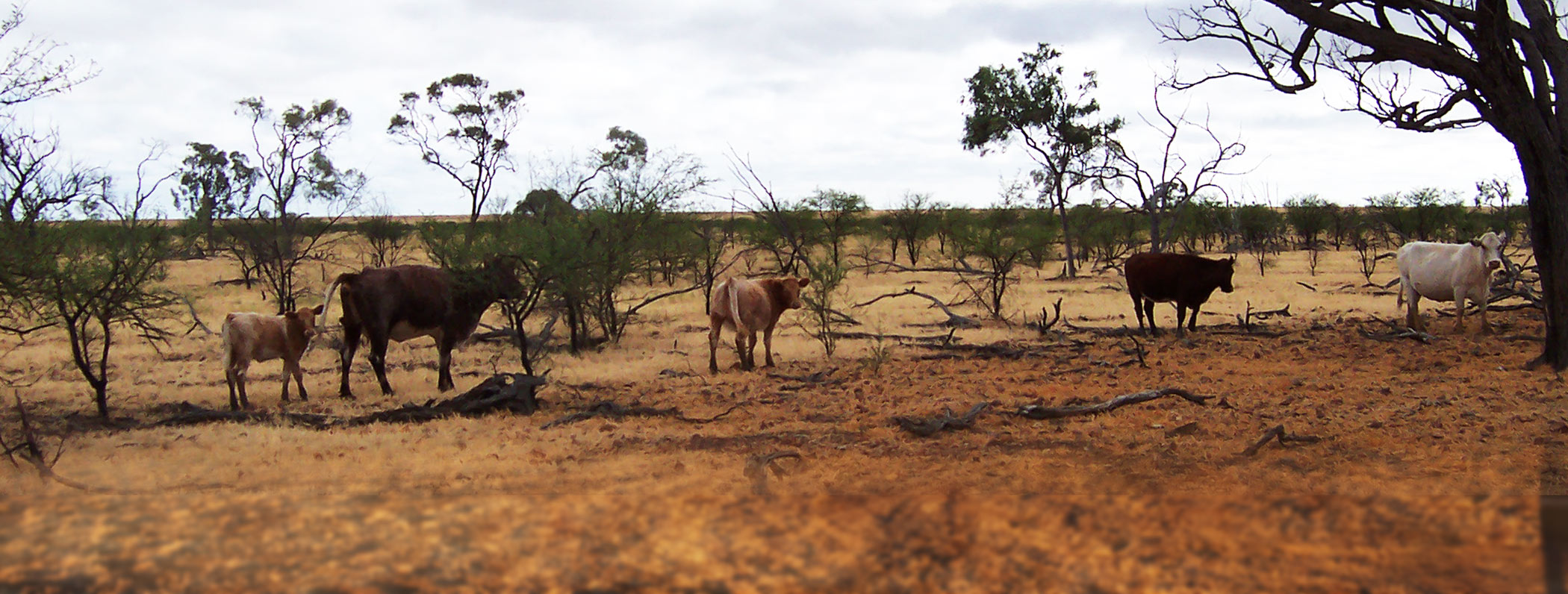Family History
Muttaburra Memories
My links to Muttaburra come from my mother, Betty Bowden the daughter of Lizzie and Sonny Bowden. My mother was the youngest girl in the family and a good tennis player and baker of excellent sponge cakes. She met my father James O’Dwyer when he was posted to Muttaburra as the Primary School Teacher in 1940. They were married in 1942 and my father was called up shortly afterwards. He became a Commando in Z Special Force and was killed towards the very end of WWII when he and 3 other Commandos were parachuted behind enemy lines in Borneo. They were accidentally dropped into a Japanese encampment, while their supplies were dropped outside. One of them survived.
I first came to Muttaburra as a five year old in 1948. My grandparents, the Bowdens were salt of the earth, hardworking and kind people. My brother and I and my mother joined them in their house on Bridge Street, down near where the bridge crosses the Thompson River. My grandfather, worked as a stockman and station manager and at the time caught wild horses (brumbies) which he then ‘tamed’ and probably sold. He also kept a horse or two to take part in the Muttaburra horse races. Having wild horses jumping and rushing around in the back yard (fenced off, but just) was a different experience. My grandparents also had a young jockey sharing a room with Uncle Jack, my mother’s youngest brother who later went off to Korea and came back damaged by the traumatic events he experienced. My grandmother cooked and cleaned for everyone. Hot meals three times a day, usually meat and potatoes and vegetables followed by a pudding or homemade cake. How she managed I cannot imagine. There were also other boarders who popped in for a few months or days.
Boiling clothes and sheets in a copper and lifting the heavy wet things with a pole, even pegging them out looked laborious, let alone the ironing which was either an iron made of metal heated on top of the stove, or a more dangerous, hissing thing which probably ran on good old kerosene. The cooking took place on a large metal range, set back into a corrugated iron niche, and was heated by timber, blazing hot in the hot climate for most of the time, but cosy in winter. This was not a life for the faint hearted. I don’t remember too many complaints though. My grandmother often whistled while she worked, or listened to music on the ABC. Of course, most people didn’t have air-conditioning in those days, but in Muttaburra, people weren’t even able to run electric fans to obtain some relief from the heat. In the midst of this my grandmother also kept a lovely garden as long as she lived in Bridge Street. There were tall trees, flowers, and even a green lawn, a little oasis all watered by hand with the local bore water. At the back in a separate enclosure, she kept chooks, which hid amongst the tall bamboo stands but thankfully mostly laid their eggs in their nesting area making them easier to find.
During one school holiday I stayed with my grandparents in a station cottage, where grandad was working, and remember him coming home during the day. It was scorching hot and as he came onto the veranda, he took his leather hat from his head and fanned himself with it. He was dripping with perspiration and seemed very upset. He told us that his best and favourite dog had been out with him and they had stopped for a drink of water. Then as grandad had issued a command to the dog, to get behind some sheep, it had suddenly dropped dead in its tracks. He tried to hide his hurt but we could see that he was very upset. This story came to my mind when years later after I had left Muttaburra, I heard that grandad had also dropped dead from a heart attack. Maybe he and his dog are reunited now.
At least at that time Muttaburra had telephone and wireless connections. Outside the house, we had a huge pole held aloft by metal strings staked into the earth, so during my school holidays I could listen to the ABC’s Children’s hour and the Argonauts. Then for the adults there was ‘Blue Hills’ and ‘When a Girl Marries’, as well as ‘Pick a Box’ and some Crime Series in the evenings as well as the longed for News from the outside world.
There was also a local hospital run very capably by Dr Arratta and his wonderful staff. Dr Arratta was much loved by my grandmother, but to me he was a terrifying presence, usually wielding items such as ‘needles’ or talking of operations. I had my tonsils taken out by Dr Arratta and the smell of the awful aesthetic chloroform makes me gag even today.
I remember Bud Daly’s store very well. He was the local baker and always had a cheerful disposition. The butcher’s shop was run by Mr Langdon a local grazier, who was also pleasant and interesting to chat to and gave the town good quality meat. There was the open air cinema where movies ran 3 times a week, a few hotels, the Cassimatis Store further along closer to the school. There was also an Anglican Church and a Catholic Church. Before I left Muttaburra, a small swimming pool was built which was a relief in such a dry and dusty environment.
Looking back at that time from the present day amazes me. Of course it was a different era but the people were amazingly self-sufficient and stoic. Mail only came once a week and that included magazines, and as an avid reader, I wonder how they managed without a library. Perhaps books were able to be posted from Longreach Library. Although for most of my time in Muttaburra I remember it as a hot dry place, we did have a couple of memorable floods during the 1950s. For me as I watched the flood waters swirling beneath our floor boards, I was delighted to hear that the airports were closed and I would be unable to return to school in Townsville until they opened again. For the adults it must have added misery as well as fun. Roads were not sealed and cars were constantly bogged and stranded between Longreach and Muttaburra, and even food supplies ran low and needed groceries were rowed across the Thompson river, sometimes ending up in the Thompson River. However as well as all the unusual green lushness after the floods, there were other benefits such as the river yielding up a good amount of ‘Yellow Belly’ fish and vast amounts of crayfish or yabbies…..we won’t mention the mosquitoes!
Most of my time was spent away from Muttaburra, as I went to boarding school in Townsville. Those old DC3s (TAA I think) created the most noise I had ever experienced. They were not pressurised of course so barley sugar was handed around by a smartly dressed Air Hostess at the beginning and end of flights, to prevent our ears ‘popping’. Meals on the aircraft were also quite stylish. Silver coloured salt and pepper shakers, cutlery and plates were presented on trays and the food (the very little I ever partook of) seemed very good. However, cursed by air sickness, I had to sit clutching those air sickness bags and was often a shade of green upon arrival in Townsville.
My mother later remarried Jack Walton from Yorkshire in England who was a Motor Mechanic and after arriving in Muttaburra was employed as a mechanic by Somerset Motors. He eventually left Somerset Motors and built a garage in Muttaburra. It was sold in 1959 and we then moved to Brisbane and eventually on to our separate lives.
Source: Maggie – maggie300@optusnet.com.au
Z Special Unit came into existence on 1 June 1942, the first Commando Unit in Australia.
The unit was created at the suggestion of the commander of Allied land forces in the South West
Pacific Area, General Thomas Blamey, and was modelled on the British Special Operations
Executive (SOE) in London. It was renamed Special Operations Australia or SOA and in 1943
became known as the Services Reconnaissance Department (SRD). In June 1942, an ISD
raiding/commando unit was organised and designated Z Special Unit.
This was the Unit that my father James Joseph O’Dwyer, was successsful in gaining admission to
and was also successful in completing the required training course. His part of the jungle warfare
training was carried out on Fraser Island a place not too far from where I live now on the Sunshine
Coast. A local man does occasional special tours of the Island to show remnents of the Training
School and Course, which now holds some historical interest.
The Z men, were trained in explosives, camouflage and silent killing behind enemy lines and some
carried cyanide pills in case of capture.
They are best known for a 3,000 km voyage on a daring 1943 raid called Operation Jaywick. The
men dyed their skin and wore sarongs to resemble Indonesian fisherman. Seven ships were sunk in
enemy-held Singapore Harbour, but a follow-up mission, Rimau, was sadly an abject failure with
all 23 participants killed.
The Unit is said to have carried out 284 missions in the Pacific, sneaking into places such as Timor
and New Guinea. By war’s end, 32 men from Z Unit were in Borneo, working in four areas against
30,000 enemy soldiers.
Sworn to secrecy, Z veterans were not allowed to tell anyone of their experiences until 1980.
Although some famous stories were indeed told before that date.
My Dad’s Mission was named Platypus VII one of a number of Platypus missions all targeted on
Borneo in 1945.
Both Platypus VI and Platypus VII’s missions were to be dispatched from Australia to Borneo on
30 June 1945 where both parties would be dropped by parachute in different locations behind
enemy lines, so they could radio back information to help with the Allied invasion of Balikipapan
planned for 1 July 1945.
Both Platypus Missions should have had their own aircraft but one had mechanical problems so
both missions were put into the one aircraft which was to cause major problems.
Platypus VI was commanded by a legend of a man Capt. “Jock” McLaren, who had already proven
to be invaluable as a coastwatcher and in skirmashes with the Japanese. During one period of his
service in the Philippines, McLaren commanded a 26-foot whaleboat called The Bastard, which he
launched against the Japanese in broad daylight, shot up supply vessels and piers with machine
guns, then turned tail and ran before the Japanes knew what had hit them. Jock had been specially
recruited for Z Special Unit.
I’m proud to know my Dad got to meet Jock and probably to know him. Jock had fought in
WWI, so was already in his forties during WWII. Jock and his men were dropped wide of their
target and their storpodeos (containing supplies and ammunition) mainly dropped where they were
very difficult to locate, but Jock managed to bring most of his men except one, back to the coast. I
think he had become very wily and used to jungle warfare as well as blessed with a bit more good
luck.
My Dad’s mission Platypus VII was headed by Flight Lt. Alan Martin. The object of the mission
was to carry out a reconnaissance of the area about 20 klms north of Balikipapan. The party was
dropped at 20.00 hrs on 30 June 1945, by a Liberator bomber piloted by W/C Reid. The dropping
of personnel and their storpedoes (containing ammunition & supplies) was described as “very
poorly executed” in a report after the war. The drop was made much later than planned and the
storpodeos were dropped so far away, that there was no possibility of ever retrieving them. F/Lt
Martin was unable to sight the Drop Zone (because he was already in the rear of the aircraft in
harness as ordered by the pilot he was unable to crawl forward to the bombardier’s compartment)
and the party were dropped almost on top of a Japanese encampment, with about 200 Japanese
soldiers there in preparation for the coming Allied invasion, instead of the usual 30.
Flt. Lt. Martin’s parachute became caught up in a very high tree. He said the last time he saw the
rest of his party, he watched their parachutes floating fairly close together, and never saw them
again. Flt. Lt. Martin was able to cut himself free but was wounded when he hit the ground from
the great height. Later as he made his painful way out, he heard gunfire over the next couple of days
and thought it was his men being killed. He did hear reports from natives that his men had been
captured and killed.
After the war the bodies of two Commondos were discovered, beheaded, while our Dad’s body was
not found.
In 2000, my brother decided to try to find out what he could about what had happened to the three
commandos. He wrote letters to Japan through interpreters and to Indonesia to see if anyone with
any knowledge of the area, or anyone who might have been there and was still alive could help in
any way.
He was lucky to find an elderly gentleman in Japan (in his 80s) who had been at the exact jungle
depot where our commandos had been dropped on 30 June 1945. This gentlemen was even there
when our Dad was killed and was able to draw a map and tell the interpreter what happened.
That’s how we discovered the men had landed exactly in the middle of the compound, one even
landed on the roof of one of the buildings. However they managed to fight their way out of the
compound and laid low for a day or so as they scouted the area trying to locate their storpedoes.
Their ammunition must have been running low because they decided to try to break into a well
secured outbuilding (that did contain Japanese ammunition) but were surprised in the attempt in the
early hours of the following morning and as they tried to escape our father was bayoneted in the
back a number of times and killed. The other two were captured with slight wounds and
consequently beheaded.
My brother and Alan Martin (former Flt.Lt. and Leader of Platypus VII and only survivor) then
went back to Borneo to retrace the Commandos’ old descent into the jungle and to try to locate
where our Dad’s remains could possibly be. After lots of investigations they were able to find out
that his remains had been in a jungle grave and were moved by the Japanese for some reason, then
overlooked by the first Australians sent to recover remains, and although discovered by the second
Australian War Dead search were not identified but marked as ‘Unknown’. Then his remains went
on a reinterrment roundabout. Relocated to Balikipapan, then to Tarakan, then to Sandakan and
finally to the Commonwealth War Cementery at Labaun. My brother’s research was able to finally
identify our Dad’s remains in Grave 5D5 marked Unknown.
To end this story. The Office of Australian War Graves was kind enough to allow my brother to
keep the old plaque marked ‘Known Unto God’ while our Dad’s bones are finally marked with a
plaque carrying his name. Sadly I wish we had been able to bring his bones home. Since all we
have in Australia is his name on the wall of the War Memorial in Canberra, similar to a lot of
families. It seems more caring and personal to be able to visit a grave in your own homeland.
In memory of Sgt. James Joseph O’Dwyer (my father)
Sig Ernest Henry Myers N. Z. (the youngest of the group)
L/Sgt Ma’eroff bin Said whose name is also shown as Ma’aruff bin Shalid in the War Memorial (both with same service number)
Written by JJ O’D’s daughter Maggie Stahnke



